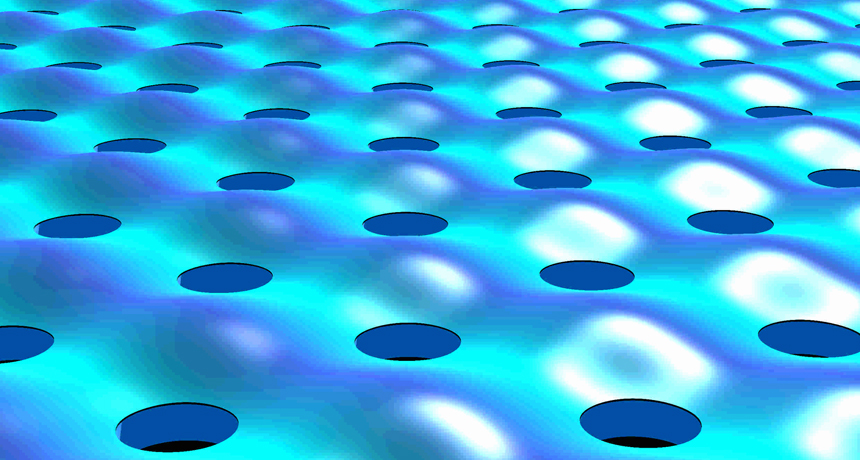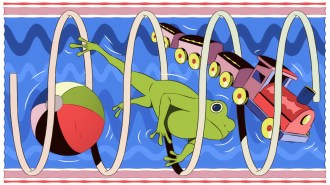Perfect mirror debuts
Material that reflects light without letting any escape could improve lasers

A new type of mirror consists of a slab of silicon nitride drilled with tiny holes (illustrated). The holes and the gaps between them are smaller than the wavelength of visible light.
Bo Zhen






